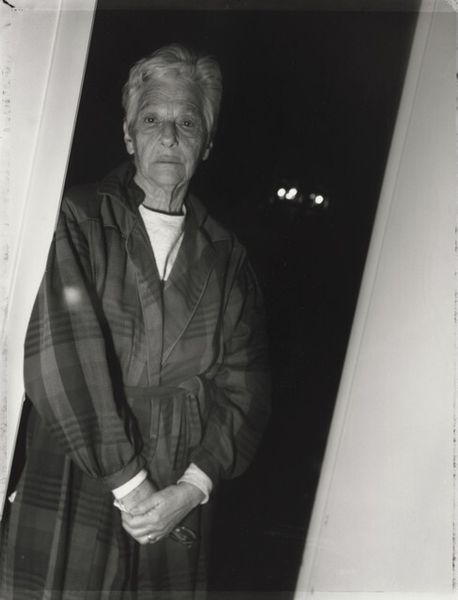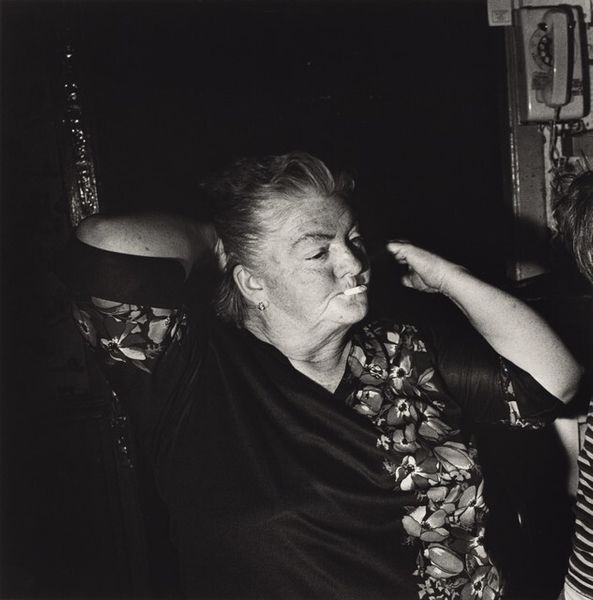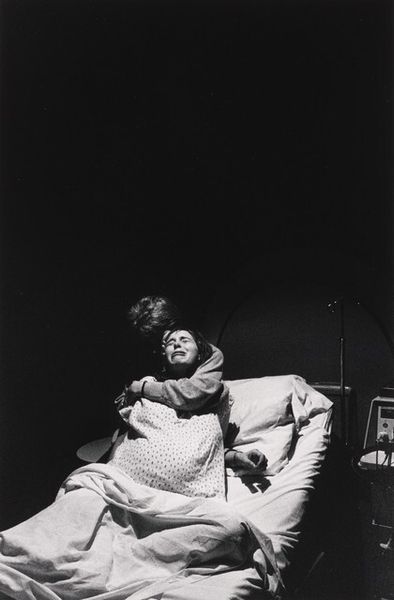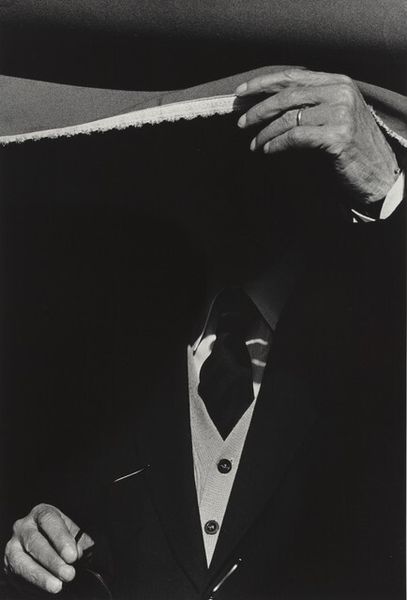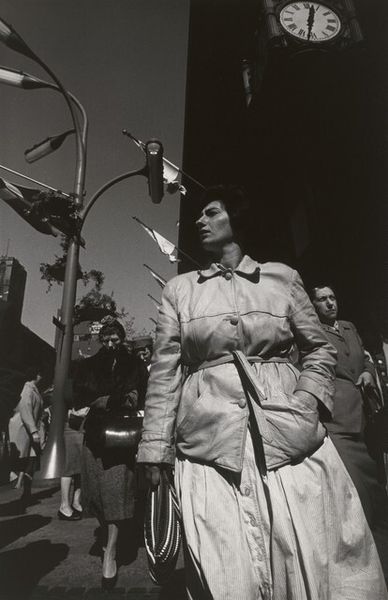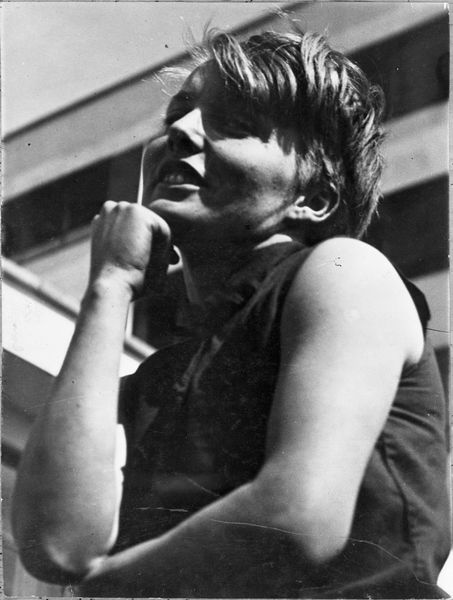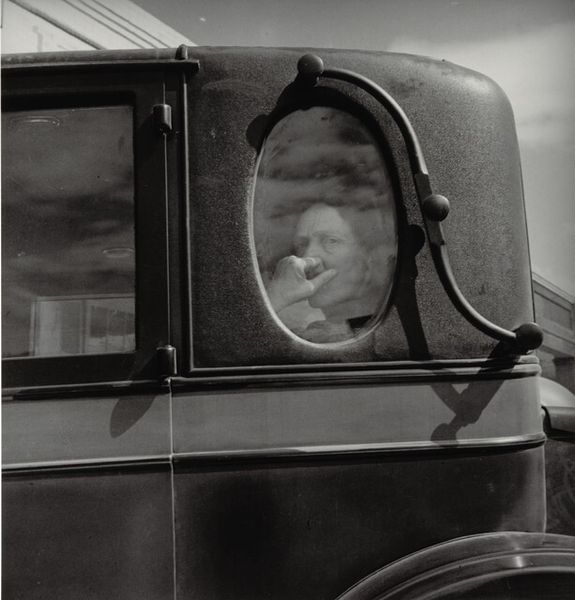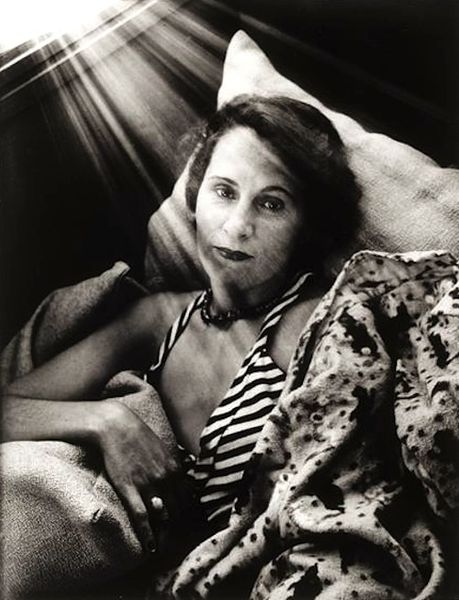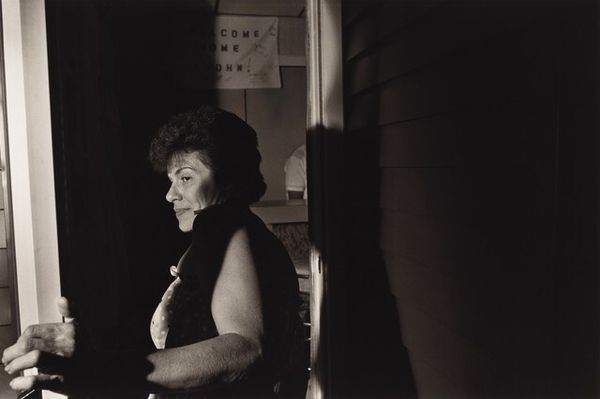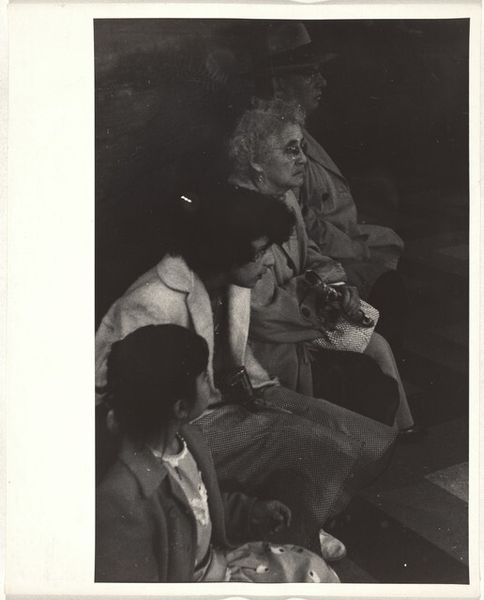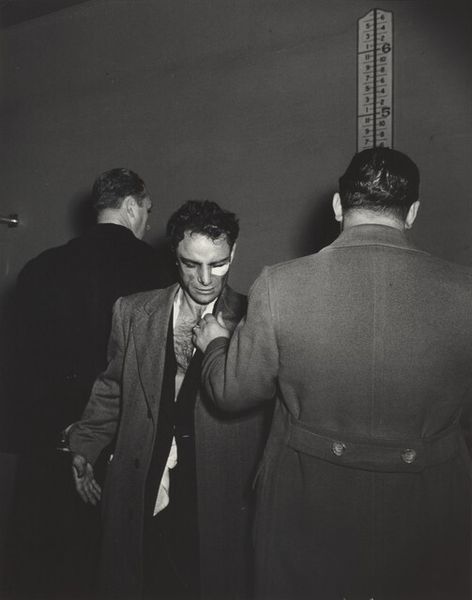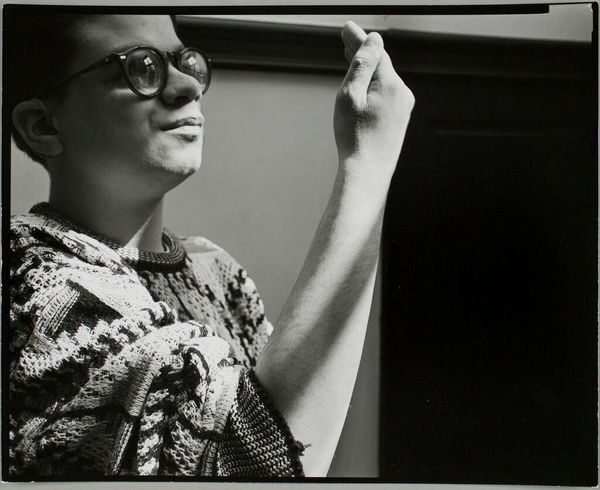
photography, gelatin-silver-print
#
portrait
#
black and white photography
#
street-photography
#
photography
#
black and white
#
gelatin-silver-print
#
monochrome photography
#
monochrome
#
realism
#
monochrome
Dimensions: overall (image): 42.1 x 27.6 cm (16 9/16 x 10 7/8 in.) sheet: 43.02 x 35.56 cm (16 15/16 x 14 in.) mat: 60.96 x 45.72 cm (24 x 18 in.)
Copyright: National Gallery of Art: CC0 1.0
Editor: This is "Chicago," a gelatin-silver print made in 1961 by Harry Callahan. It’s a black and white photograph of a woman on a busy street, caught mid-stride. There’s a kind of anxiety in her expression, I think. What do you see in it? Curator: I see a portrait that's deeply embedded in its historical and social context. Callahan made this work during a time of significant shifts in urban landscapes and evolving roles for women. Do you notice how the city, almost a character itself, looms in the background? Editor: Yes, it’s really imposing. Those buildings feel so close. Curator: Exactly! Callahan seems to be inviting us to consider the position of this woman within the modern urban environment. The image speaks to the themes of anonymity and alienation, so prevalent in discussions of urban life. Considering the male figures behind her, the picture also subtly raises questions of the gendered experience of navigating the public sphere. How does her image connect with the wider representation of women in street photography from that era? Editor: I hadn’t thought about that…I guess I’ve seen a lot of street photography that’s more about observing than really engaging with the subject as an individual. Curator: Precisely. Callahan’s work isn't simply a snapshot; it’s an observation laden with questions about identity and experience within a specific socio-political moment. He's asking us to look closer, to think about what it means to be a woman moving through the city at this moment in time. Editor: That really shifts my perspective. It's more than just a photograph; it’s a statement about a woman's place in a changing world. Curator: Absolutely, seeing art as embedded in broader intersectional narratives helps us to read beyond the surface.
Comments
No comments
Be the first to comment and join the conversation on the ultimate creative platform.
